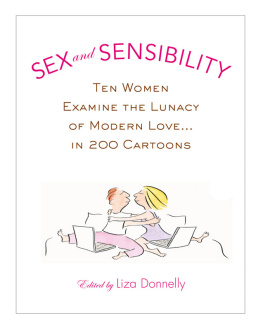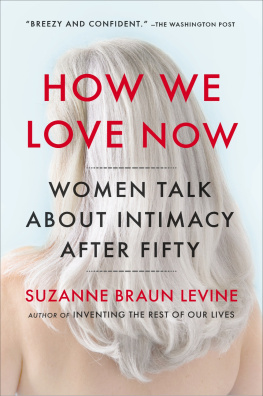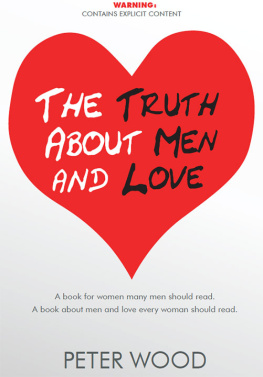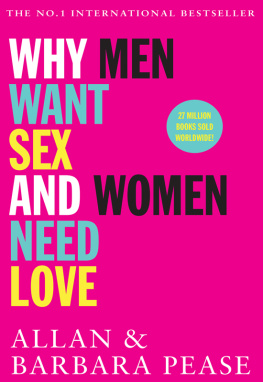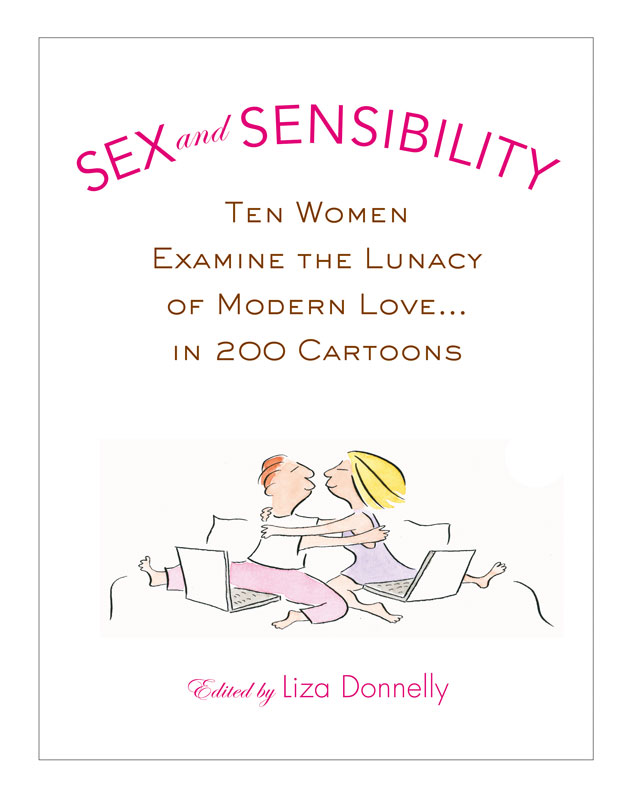Copyright 2008 by Liza Donnelly
All rights reserved. Except as permitted under the U.S. Copyright Act of 1976, no part of this publication may be reproduced, distributed, or transmitted in any form or by any means, or stored in a database or retrieval system, without the prior written permission of the publisher.
Twelve
Hachette Book Group USA
237 Park Avenue
New York, NY 10017
Visit our Web site at www.HachetteBookGroupUSA.com.
Twelve is an imprint of Grand Central Publishing.
The Twelve name and logo are trademarks of Hachette Book Group USA, Inc.
First eBook Edition: April 2008
ISBN: 978-0-446-53621-9
For Michael
We love because its the only true adventure.
Nikki Giovanni
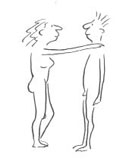
SO MUCH IS HAPPENING AT BREAKNECK SPEED, its difficult to know how to behave. When Jane Austen wrote Sense and Sensibility, she may have felt similarly. She wrote of the conflict between sensethe concern for decorum and worldly things; and sensibilitythe attention to inner life and the senses. Her concerns were womans place in her world, and the notion that while fitting in may be important, the inner world of emotion and creative thought can be elevating. While her world was not changing at the crazy speed of todays, it must have been confusing.
Even now we attempt to adapt, fit in, make money, make love, make laughter. This book speaks to similar issuesfitting in and listening to inner thoughtsand brings them to contemporary discussion. Here, collected in cartoons and essays, are creative thoughts of ten women who, in many ways, chose not to fit in, not to go the way of sense. Instead, they chose to tap into their sensibilities, with humor. Austen made use of humor in her writing, for laughter often loosens strictures as it opens eyes. It helps us deal with the wackiness of life and love.
As it gets progressively more difficult to keep up with whats going on, escaping becomes a pleasant idea. Turning off the BlackBerry is a pleasant idea. But then, think of what youll miss. And there might not be support groups for e-mail addiction in Tibet. Better to keep the BlackBerry on, and enjoy the ride. Its a technological theme park, and the absolute best ride is the Love Roller Coaster. Screaming and laughing may be the best (and only) solution. Take a cartoonist with you for the ride; I promise you it will be even more fun.
Cartoonists are journalists, but dont report in the traditional way. We use humor to shed light on craziness, on cultural trends, politics, human behavior. Many Americans now get their news from Jon Stewart and Stephen Colbert. No wonder: So much of the news is grim, they give us permission to laugh. And while many just leave it at that, the effectiveness of humorwhen it is goodcan bring reality into clarity more succinctly. While naysayers bemoan the fact that Americans news comes from the likes of Stewart and Colbert (and Tina Fey, until she left Saturday Night Live), this is good news for humorists. In 1941, E. B. White wrote in his introduction to A Subtreasury of American Humor,
The world likes humor, but it treats it patronizingly. It decorates its serious artists with laurel, and its wags with Brussel sprouts. It feels that if a thing is funny it can be presumed to be something less than great, because if it were truly great it would be wholly serious.
The treatment of wags, or humorists, has remained the same for decades. The New Yorker magazine brought some respectability to wags, beginning as a humor magazine in 1925 with the likes of E. B. White, Katherine Angell, Dorothy Parker, Helen Hokinson, James Thurber, and S. J. Perelman, to name a few. Humorists were understood to be artists and thinkers who made us laugh. Dorothy Parkers work, while hilarious, verged on tragedy much of the time. Her artistry points to the clear thin line between comedy and tragedy. When we laugh at our plight, its reality often cuts into the soul more quickly.
And what is closer to our soul than love? Cartoonists draw about war, famine, and corruption. But when they draw about love, we really listen. Love is the universal language, and the universal headache. The War Between Men and Women has gone on so long, its tempting not to call it a war anymore. Arent wars supposed to have a beginning, a middle, and an end? The term Perpetual State of Misunderstanding Between Men and Women may be a betteralthough less poeticway of describing the situation. And do battling factions in a war make love along the way? Temporary Truces or Meetings-at-Large-Round-Tables-in-Geneva dont really equate with making love. Nor do weekends at Camp David (although we never really know what happens at these gatherings, do we?). What goes on between men and women is complicated, and cannot be simply described as a war or battle. Cartoonists know this, and it is their job to ferret out the details to make us laugh and see what is really going on. We pick at the details to find the truth.
For most of the history of the world, the chronicling of love has been doneor at least recordedby men. (Perhaps that is why it has been called a battle. Men love battles.) Shakespeare, Byron, Keats, Twain, Hemingway, Updike, Thurber all wrote of love and sometimes made us laugh. Thurber brought The War Between Men and Women back into parlance with his series of cartoons under that title. But it was a war between the sexes in 1950s America. Men and women were being forced into roles they did not want to fill. We attacked each other, each gender thinking the other was forcing the issue. When the roles were challengedwhen we realized that women should not have to be perfect, sweet homemakers and weigh 110 pounds and that men should not have to be strong and silent and earn tons of moneythe battle changed to something else. It is no longer a war, but continuous communicationa Sexual United Nations, with representatives from all walks: lesbians, gays, transsexuals, feminists, traditionalists, and maybe even eunuchs. When all sides of the battle are given the floor and heard, as women began to be heard in the 1960s (and had to a certain extent in the 1920s, but it was short-lived), then the war becomes a conversation.
The discourse can get heated sometimes, and it can come to fisticuffs. But the dialogue is there. What happens when the dialogue changes format? When we talk via the Internet, instead of face-to-face? What happens when we make love via cell phone? Do the rules change? Are we going to see a breakdown of communication? A resurgence of war, a technological skirmish, a BlackBerry Battle? Not if women and men have a voice. Not to say misunderstanding will disappear, but it wont be a battle. The new rules of the twenty-first century make it more confusing, but they increase our dialogue. And now the discussion firmly includes womens voices (unlike Jane Austens timeshe wrote anonymously). And while it may be much more interesting to cover a war than to cover a peace, it is the subtlety of the situation that calls for chronicling from cartoonists. Cartoonists of both sexes.
When I was little, my mother loved to recite the following Dorothy Parker verse:
News Item
Men seldom make passes
At girls who wear glasses.
Nearsighted since the age of nine, I had to wear glasses if I wanted to see the world clearly. My mother, also visually impaired, loved to tell me that she walked around half blind for most of her young-lady life because, she said, she wanted the attention of men. Its the same with shoes: High heels may make a womans legs look more beautiful, but they put a girl in a very precarious, vulnerable position. Seeing clearly, walking strongly, were not feminine. Why would we need that when men can see for us and support us? For so many years, they have been the movers and seers.

